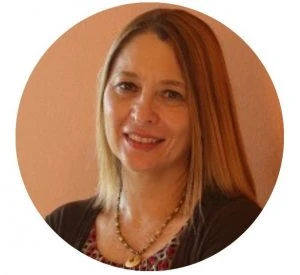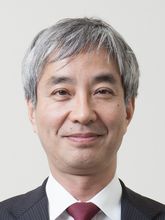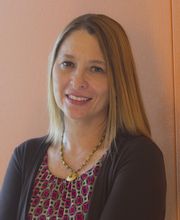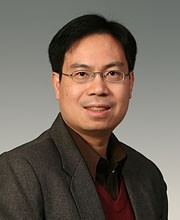KeynotesAPSEC 2022
Three keynote speakers have been appointed as follows.
December 7th
Dr. Hiroshi Maruyama (Kao Corporation, Executive Fellow. The University of Tokyo, Project Professor. Preferred Networks, Inc., Fellow)

December 8th
Dr. Grace A. Lewis (Carnegie Mellon University Software Engineering Institute (SEI), Lead for the SEI Tactical and AI-enabled Systems initiative. IEEE Computer Society, Vice President)

December 9th
Prof. Shing-Chi Cheung (Hong Kong University of Science and Technology, Professor)

Tue 6 DecDisplayed time zone: Osaka, Sapporo, Tokyo change
15:00 - 16:00 | |||
15:00 60mTutorial | Process Mining for Software Engineers Tutorial Wil van der Aalst RWTH Aachen University, Germany | ||
Wed 7 DecDisplayed time zone: Osaka, Sapporo, Tokyo change
10:30 - 11:00 | |||
11:00 - 12:00 | |||
11:00 60mKeynote | Machine Learning Systems Engineering: Retrospective of Five-Year Activities in Japan Keynotes Hiroshi Maruyama Preferred Networks | ||
13:00 - 14:00 | Empirical Studies 1SEIP - Software Engineering in Practice / Technical Track at Room1 Chair(s): Masateru Tsunoda Kindai University | ||
13:00 20mPaper | An Empirical Study on Multi-Source Cross-Project Defect Prediction Models Technical Track Xuanying Liu Beijing Jiaotong University, Zonghao Li Beijing Jiaotong University, Jiaqi Zou Beijing Jiaotong University, Haonan Tong Beijing Jiaotong University | ||
13:20 15mPaper | Refactoring Community Smells: An Empirical Study on the Software Practitioners of Bangladesh SEIP - Software Engineering in Practice Noshin Tahsin Institute of Information Technology, University of Dhaka, Kazi Sakib Institute of Information Technology, University of Dhaka | ||
13:35 20mPaper | How Libraries Evolve: A Survey of Two Industrial Companies and an Open-Source Community Technical Track Oleksandr Zaitsev Arolla, Univ. Lille, Inria, CNRS, Centrale Lille, UMR 9189 CRIStAL, F-59000 Lille, France, Stéphane Ducasse Inria; University of Lille; CNRS; Centrale Lille; CRIStAL, Nicolas Anquetil University of Lille, Lille, France, Arnaud Thiefaine Arolla | ||
13:00 - 14:00 | Machine Learning 1Technical Track at Room2 Chair(s): Syful Islam Nara Institute of Science and Technology | ||
13:00 20mPaper | Catch Me If You Can: Blackbox Adversarial Attacks on Automatic Speech Recognition using Frequency Masking Technical Track | ||
13:20 20mPaper | Code Question Answering via Task-Adaptive Sequence-to-Sequence Pre-training Technical Track Tingrui Yu School of Software, Shanghai Jiao Tong University, Beijun Shen School of Electronic Information and Electrical Engineering, Shanghai Jiao Tong University, Xiaodong Gu Shanghai Jiao Tong University | ||
13:00 - 14:00 | Model Checking 1Technical Track / ERA - Early Research Achievements at Room3 Chair(s): Hiroyuki Nakagawa Osaka University | ||
13:00 20mPaper | Bisection Value Iteration Technical Track | ||
13:20 20mPaper | Non-Intrusive Annotation-Based Domain-Specific Analysis to Certify Event-B Models Behaviours Technical Track Ismail Mendil INPT-ENSEEIHT/IRIT, Peter Rivière INPT-ENSEEIHT / IRIT, University of Toulouse, France, Yamine Ait Ameur IRIT/INPT-ENSEEIHT, Neeraj Singh INPT-ENSEEIHT / IRIT, University of Toulouse, France, Dominique Mery Université de Lorraine, LORIA, Philippe Palanque ICS-IRIT, Université Toulouse III Paul Sabatier | ||
13:40 15mPaper | Combining Model-Based Testing and Automated Analysis of Behavioural Models using GraphWalker and UPPAAL ERA - Early Research Achievements Saurabh Tiwari DA-IICT Gandhinagar, Parv Shah DA-IICT Gandhinagar, India, Eduard Paul Enoiu Mälardalen University | ||
14:30 - 15:40 | Migration and VisualizationTechnical Track / SEIP - Software Engineering in Practice / ERA - Early Research Achievements at Room1 Chair(s): Siripen Pongpaichet Mahidol University | ||
14:30 15mPaper | Unified program cross-architecture migration framework model SEIP - Software Engineering in Practice Zhou Minhao Hunan University, Zhe Quan Hunan University, Xin Huang AECC Hunan Aviation powerplant Research Institute | ||
14:45 20mPaper | Two-Stage Patch Synthesis for API Migration from Single API Usage Example Technical Track | ||
15:05 15mPaper | Visualizing Contributor Code Competency for PyPI Libraries: Preliminary Results ERA - Early Research Achievements Indira Febriyanti Universitas Muhammadiyah Surakarta, Raula Gaikovina Kula Nara Institute of Science and Technology, Ruksit Rojpaisarnkit Nara Institute of Science and Technology, Kanchanok Kannee Nara Institute of Science and Technology, Yusuf Sulistyo Nugroho Universitas Muhammadiyah Surakarta, Kenichi Matsumoto Nara Institute of Science and Technology | ||
15:20 15mPaper | Why Visualize Competitive Code? Preliminary Categories for Jupyter Notebooks ERA - Early Research Achievements Tasha Settewong Mahidol University, Natanon Ritta Mahidol University, Raula Gaikovina Kula Nara Institute of Science and Technology, Chaiyong Rakhitwetsagul Mahidol University, Thailand, Thanwadee Sunetnanta Mahidol University, Kenichi Matsumoto Nara Institute of Science and Technology | ||
14:30 - 15:40 | |||
14:30 20mPaper | SysML Flow Model Technical Track | ||
14:50 20mPaper | Tuning SAT solvers for LTL Model Checking Technical Track Anissa Kheireddine LRDE, Etienne Renault LRDE, Souheib Baarir Université Paris Ouest Nanterre La Défense/LIP6 | ||
15:10 20mPaper | Bounded Model Checking of Synchronous Reactive Models in Ptolemy II Technical Track Xiaozhen Zhang Dalian University of Technology, Zhaoming Yang Dalian University of Technology, Hui Kong Huawei Technologies Co., Ltd., Weiqiang Kong Dalian University of Technology | ||
14:30 - 15:40 | |||
14:30 20mPaper | Toward a Better Alignment Between the Research and Practice of Code Search Engines Technical Track | ||
14:50 20mPaper | Multi-Perspective Alignment Mechanism for Code Search Technical Track | ||
15:10 20mPaper | Automated Generation of Bug Samples Based on Source Code Analysis Technical Track Tianming Zheng Shanghai Jiao Tong University, Zhixin Tong Shanghai Jiao Tong University, Yi-Ping You National Chiao Tung University, Yue Wu Shanghai Jiao Tong University | ||
Thu 8 DecDisplayed time zone: Osaka, Sapporo, Tokyo change
09:00 - 10:00 | |||
09:00 60mKeynote | Improving Development of ML-Enabled Systems through Software Architecture Keynotes Grace Lewis Carnegie Mellon Software Engineering Institute | ||
13:00 - 14:30 | Smart ContractTechnical Track / ERA - Early Research Achievements at Room2 Chair(s): Yoshiki Higo Osaka University | ||
13:00 20mPaper | Grey-box Fuzzing Based on Execution Feedback for EOSIO Smart Contracts Technical Track Wenyin Li Hebei university, Meng Wang Hebei university, Bin Yu Xidian University, Yuhang Shi Xidian Univeristy, Mingxin Fu Xidian Univeristy, You Shao Xidian Univeristy | ||
13:20 15mPaper | SCAR: Smart Contract Alarm Ranking} ERA - Early Research Achievements | ||
13:35 20mPaper | Data Flow Reduction Based Test Case Generation for Smart Contracts Technical Track Shunhui Ji Hohai University, Shaoqing Zhu Hohai University, Pengcheng Zhang Hohai University, Hai Dong RMIT University | ||
13:55 20mPaper | A Reference Architecture for Blockchain-based Traceability Systems Using Domain-Driven Design and Microservices Technical Track Yanze Wang Nanjing University, Shanshan Li Nanjing University, Huikun Liu Nanjing University, He Zhang Nanjing University, Bo Pan Huawei Technologies Co., Ltd. | ||
13:00 - 14:30 | |||
13:00 20mPaper | Incremental Relational Topic Model for Duplicate Bug Report Detection Technical Track | ||
13:20 20mPaper | Multifaceted Hierarchical Report Identification for Non-Functional Bugs in Deep Learning Frameworks Technical Track Guoming Long Loughborough University, Tao Chen Loughborough University, Georgina Cosma Loughborough University | ||
13:40 20mPaper | Automatic Generation of Metamorphic Relations for a Cyber-Physical System-of-Systems Using Genetic Algorithm Technical Track Esther Cho Korea Advanced Institute of Science and Technology, Yong-Jun Shin Korea Advanced Institute of Science and Technology (KAIST), Sangwon Hyun Korea Advanced Institute of Science and Technology, Hansu Kim Korea Advanced Institute of Science and Technology, Doo-Hwan Bae Korea Advanced Institute of Science and Technology | ||
14:00 20mPaper | An approach for hazard analysis of multiple-cooperative systems considering dynamic configuration uncertainty Technical Track | ||
15:00 - 16:30 | Empirical Studies 2Technical Track at Room2 Chair(s): Yusuf Sulistyo Nugroho Universitas Muhammadiyah Surakarta | ||
15:00 20mPaper | Exploring Activity and Contributors on GitHub: Who, What, When, and Where Technical Track Xiaoya Xia East China Normal University, Zhenjie Weng East China Normal University, will wang , Shengyu Zhao Tongji University | ||
15:20 20mPaper | The Language of Programming: On the Vocabulary of Names Technical Track | ||
15:40 20mPaper | An Empirical Study of Predicting Fault-prone Components and their Evolution Technical Track | ||
16:00 20mPaper | Empirical Study of Co-Renamed Identifiers Technical Track Yuki Osumi Tokyo Institute of Technology, Naotaka Umekawa Tokyo Institute of Technology, Hitomi Komata Tokyo Institute of Technology, Shinpei Hayashi Tokyo Institute of Technology DOI Pre-print | ||
15:00 - 16:30 | Machine Learning 2Technical Track at Room3 Chair(s): Morakot Choetkiertikul Mahidol University, Thailand | ||
15:00 20mPaper | Retrieve-Guided Commit Message Generation with Semantic Similarity And Disparity Technical Track Zhihan Li School of Computer Science and Engineering, Central South University, Yi Cheng School of Computer Science and Engineering, Central South University, Haiyang Yang School of Computer Science and Engineering, Central South University, Li Kuang School of Computer Science and Engineering, Central South University, Lingyan Zhang School of Computer Science and Engineering, Central South University | ||
15:20 20mPaper | Systematic Analysis of Defect Specific Code Abstraction for Neural Program Repair Technical Track Kicheol Kim Sungkyunkwan University, Misoo Kim Sungkyunkwan University, Eunseok Lee Sungkyunkwan University | ||
15:40 20mPaper | NEGAR: Network Embedding Guided Architecture Recovery for Software Systems Technical Track Jiayi Chen State Key Lab for Novel Software Technology, Nanjing University, Zhixing Wang State Key Lab for Novel Software Technology, Nanjing University, yuchen jiang , Tian Zhang Nanjing University, Jun Pang University of Luxembourg, Minxue Pan Nanjing University, Nitsan Amit Hebrew University | ||
16:00 20mPaper | Goal-oriented Knowledge Reuse via Curriculum Evolution for Reinforcement Learning-based Adaptation Technical Track Jialong Li Waseda University, Japan, Mingyue Zhang Peking University, China, Zhenyu Mao Waseda University, Haiyan Zhao Peking University, Zhi Jin Peking University, Shinichi Honiden Waseda University / National Institute of Informatics, Japan, Kenji Tei Waseda University | ||
Fri 9 DecDisplayed time zone: Osaka, Sapporo, Tokyo change
09:20 - 10:30 | Review and Natural Language ProcessingTechnical Track / ERA - Early Research Achievements at Room1 Chair(s): Renuka Sindhgatta IBM Research AI | ||
09:20 15mPaper | A checklist-based approach to assess the systematicity of the abstracts of reviews self-identifying as systematic reviews ERA - Early Research Achievements | ||
09:35 15mPaper | Preliminary Analysis of Review Method Selection Based on Bandit Algorithms ERA - Early Research Achievements Takuto Kudo Kindai University, Masateru Tsunoda Kindai University, Amjed Tahir Massey University, Kwabena Ebo Bennin Wageningen University and Research, Akito Monden Okayama University, Koji Toda Fukuoka Institute of Technology, Keitaro Nakasai National Institute of Technology, Kagoshima College, Kenichi Matsumoto Nara Institute of Science and Technology | ||
09:50 20mPaper | Reducing Syntactic Complexity for Information Extraction from Japanese Requirement Specifications Technical Track Maiko Onishi Ochanomizu University, Shinpei Ogata Shinshu University, Kozo Okano Shinshu University, Daisuke Bekki Ochanomizu University | ||
10:10 15mPaper | Quality assurance study with mismatched data in sentiment analysis ERA - Early Research Achievements Tinghui Ouyang National Institute of Advanced Industrial Science and Technology, Yoshiki Seo National Institute of Advanced Industrial Science and Technology, Yutaka Oiwa National Institute of Advanced Industrial Science and Technology | ||
09:20 - 10:30 | Microservices and WebERA - Early Research Achievements / Technical Track at Room2 Chair(s): Norihiro Yoshida Ritsumeikan University | ||
09:20 15mPaper | Testing for Event-Driven Microservices Based on Consumer-Driven Contracts and State Models ERA - Early Research Achievements Chu-Fei Wu National Taiwan Ocean University, Shang-Pin Ma National Taiwan Ocean University, An-Chi Shau National Taiwan Ocean University, Hang-Wei Yeh National Taiwan Ocean University | ||
09:35 15mPaper | Analyzing and Monitoring Kubernetes Microservices based on Distributed Tracing and Service Mesh ERA - Early Research Achievements Yu-Te Wang National Taiwan Ocean University, Shang-Pin Ma National Taiwan Ocean University, Yue-Jun Lai National Taiwan Ocean University, Yan-Cih Liang National Taiwan Ocean University | ||
09:50 15mPaper | Managing Complexity in Microservices Architecture: A Nested MultiTree Domain-Driven Approach ERA - Early Research Achievements Duc Minh Le Swinburne Vietnam, FPT University | ||
10:05 20mPaper | UTCache: Updatable Transactional Cache For Database-Driven Applications Technical Track | ||
09:20 - 10:30 | TestingERA - Early Research Achievements / SEIP - Software Engineering in Practice / Technical Track at Room3 Chair(s): Jihyun Lee Jeonbuk National University | ||
09:20 15mPaper | On the Usefulness of Crossover in Search-Based Test Case Generation: An Industrial Report SEIP - Software Engineering in Practice Changze Huang Ant Group, Hailian Zhou Ant Group, Hongbing Zhao Ant Group, Wenting Cai Ant Group, Zhi Quan (George) Zhou University of Wollongong, Australia, Mingyue Jiang Zhejiang Sci-Tech University | ||
09:35 15mPaper | eBAT: An Efficient Automated Web Application Testing Approach Based on Tester’s Behavior ERA - Early Research Achievements Fuad Mridha University of Dhaka, Kazi Sakib Institute of Information Technology, University of Dhaka | ||
09:50 20mPaper | NumFuzz: A Floating-Point Format Aware Fuzzer for Numerical Programs Technical Track Chenghu Ma National University of Defense Technology, Liqian Chen National University of Defense Technology, China, Xin Yi National University of Defense Technology, Guangsheng Fan National University of Defense Technology, Ji Wang College of Computer, National University of Defense Technology | ||
10:10 20mPaper | Detecting High Floating-Point Errors via Ranking Analysis Technical Track Zheng Wang National University of Defense Technology, Xin Yi National University of Defense Technology, Hengbiao Yu National University of Defense Technology, Banghu Yin National University of Defense Technology | ||
11:00 - 12:00 | |||
11:00 60mKeynote | On the Search for Effective Metamorphic Relations: Overview, Challenges and Opportunities Keynotes Shing-Chi Cheung Hong Kong University of Science and Technology | ||
13:00 - 14:00 | Source Code Analysis 2Technical Track / ERA - Early Research Achievements at Room1 Chair(s): Yoshiki Higo Osaka University | ||
13:00 20mPaper | Diff Feature Matching Network in Refactoring DetectionBest Paper Award Technical Track | ||
13:20 15mPaper | Reusing My Own Code: Preliminary Results for Competitive Coding in Jupyter Notebooks ERA - Early Research Achievements Natanon Ritta Mahidol University, Tasha Settewong Mahidol University, Raula Gaikovina Kula Nara Institute of Science and Technology, Chaiyong Rakhitwetsagul Mahidol University, Thailand, Thanwadee Sunetnanta Mahidol University, Kenichi Matsumoto Nara Institute of Science and Technology | ||
13:35 20mPaper | An Experimental Comparison of Clone Detection Techniques using Java Bytecode Technical Track | ||
13:00 - 14:00 | Machine Learning 3Technical Track at Room2 Chair(s): Atul Gupta Indian Institute of Information Technology, Design and Manufacturing (IIITDM) | ||
13:00 20mPaper | Efficient Reinforcement Learning with Generalized-Reactivity Specifications Technical Track Chenyang Zhu , Yujie Cai Changzhou University, Can Hu changzhou university, Jia Bi University of Southampton | ||
13:20 20mPaper | Adversarial Deep Reinforcement Learning for Improving the Robustness of Multi-agent Autonomous Driving Policies Technical Track | ||
13:40 20mPaper | DronLomaly: Runtime Detection of Anomalous Drone Behaviors via Log Analysis and Deep Learning Technical Track Lwin Khin Shar Singapore Management University, Wei Minn Singapore Management University, Duong Ta Singapore Management University, Jiani Fan Nanyang Technological University, Lingxiao Jiang Singapore Management University, Daniel Lim Wai Kiat Singapore Management University | ||
13:00 - 14:00 | |||
13:00 20mPaper | Symbolic Execution of Floating-point Programs: How far are we? Technical Track Guofeng Zhang National University of Defense Technology, Zhenbang Chen National University of Defense Technology, Ziqi Shuai National University of Defense Technology | ||
13:20 20mPaper | Optimal Refinement-based Array Constraint Solving for Symbolic Execution Technical Track Meixi Liu National University of Defense Technology, Changsha, China, Ziqi Shuai National University of Defense Technology, Luyao Liu National University of Defense Technology, Kelin Ma National University of Defense Technology, Ke Ma | ||
13:40 20mPaper | Synergizing Symbolic Execution and Fuzzing By Function-level Selective Symbolization Technical Track Guofeng Zhang National University of Defense Technology, Zhenbang Chen National University of Defense Technology, Ziqi Shuai National University of Defense Technology, Yufeng Zhang Hunan University, Ji Wang College of Computer, National University of Defense Technology | ||
14:00 - 14:30 | |||
Keynote speakers
December 7th

Machine Learning Systems Engineering: Retrospective of Five-Year Activities in Japan
Dr. Hiroshi Maruyama
Abstract
The process of developing machine learning (ML)-based systems is in many aspects different from the process of developing conventional software systems, where the accumulated knowledge on Software Engineering (SE) can guide. In order to facilitate the discussions on what existing SE practices can be applied and what are missing for ML-based systems, we launched a community on Machine Learning Systems Engineering in 2017. Our activities cover a wide range of aspects regarding developing and operating ML-based systems, from requirement development, testing and quality assurance, tools and computing infrastructure, to operating and management issues. This talk reflects on the five year activities, reviews the original goals and what we have achieved and what we have not, and discuss the future directions.Short Biography
Dr. Hiroshi Maruyama has spent 26 years in IBM Research, Tokyo Research Laboratory, working on various computer science areas such as artificial intelligence, natural language processing, machine translation, hand-writing recognition, multimedia, XML, Web Services, and security. He was the director of IBM Tokyo Research Laboratory from 2006 to 2009. From 2011 to 2016, he was a professor at the Institute of Statistical Mathematics where he worked on projects related to big data, statistics, and their impacts on society. He joined Preferred Networks, Inc. in April 2016 as the chief strategy officer. His current research interests include practical applications of machine learning, social implications of information technology and machine learning, and computer science and statistics in general. Currently he is an Executive Fellow at Kao Corporation, a PFN Fellow at Preferred Networks, and a project professor at the Research into Artifacts, Center for Engineering at the University of Tokyo.December 8th

Improving Development of ML-Enabled Systems through Software Architecture
Dr. Grace A. Lewis
Abstract
Developing software systems that contain machine learning (ML) components (ML-enabled systems, or ML systems for short) requires an end-to-end perspective that considers the unique life cycle of these components — from data acquisition, to model training, to model deployment and evolution. However, a problem is that ML system development typically split into three roles, with three different and often separate workflows: data scientists build models; software engineers integrate models into ML systems; and then operations staff deploy, operate, and monitor the ML systems. Because these roles operate separately and often speak different languages, there are opportunities for mismatch between the assumptions made by each role with respect to the elements of the ML-enabled system, and the actual guarantees provided by each element, which leads to system failure. While simply better collaboration between teams is a valid solution to this problem, using software architecture design as the set of activities and artifacts that promote and record collaborative decision making is a much stronger and sustainable solution.In this talk I will first share the outcomes of two practitioner studies that highlight the problems related to treating ML systems development as a model-centric instead of a system-centric activity. I will then present a set of software architecture practices that can lead to successful ML systems. I will close the talk with some thoughts on remaining gaps in both research and practice that I hope will inspire current and future software engineering and software architecture research.
Short Biography
Grace Lewis is a Principal Researcher at the Carnegie Mellon Software Engineering Institute (SEI) where she conducts applied research on how software engineering and software architecture principles, practices and tools need to evolve in the face of emerging technologies.She is the principal investigator for the Automating Mismatch Detection and Testing in Machine Learning Systems project that is developing toolsets to support these two activities, in addition to other projects that are advancing the state of the practice in software engineering for machine learning (SE4ML). Grace is also the lead for the Tactical and AI-Enabled Systems (TAS) applied research and development team at the SEI that is creating and transitioning innovative solutions, principles, and best practices for
- architecting and developing systems to support teams operating at the tactical edge in resource-constrained environments
- engineering AI software systems
- using AI/ML at the edge for improved capabilities and mission support
She is currently VP of the IEEE Computer Society Technical & Conference Activities Board (T&C), Diversity and Inclusion (D&I) Vice-Chair for the IEEE Computer Society Technical Community on Software Engineering (TCSE), Alternate Representative for IEEE-CS on the ABET CSAB Board of Directors, as well as an ABET Evaluator for Computer Science undergraduate programs. Grace holds a B.Sc. in Software Systems Engineering and a Post-Graduate Specialization in Business Administration from Icesi University in Cali, Colombia; a Master in Software Engineering from Carnegie Mellon University; and a Ph.D. in Computer Science from Vrije Universiteit Amsterdam.
December 9th
